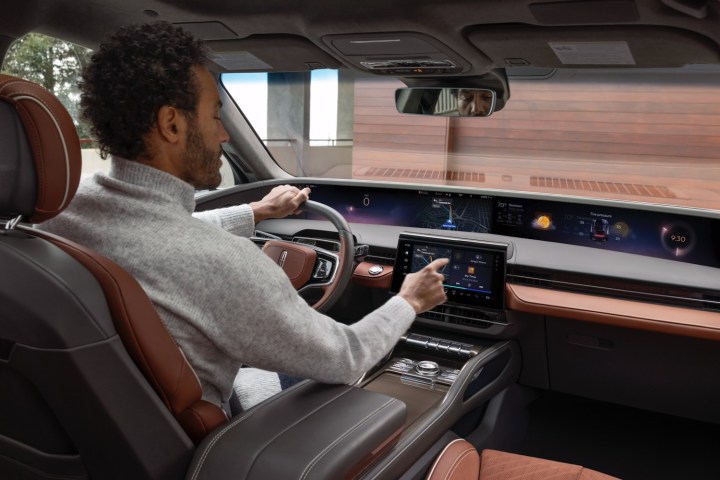
Infotainment systems have matured. Once symbols of cutting-edge tech, screens and smartphone connectivity are as obligatory in new cars as cupholders and stereos. Keeping that in mind, Ford is updating its infotainment system in a more subtle way.
Digital Trends got a preview of the new system, known simply as the Ford and Lincoln Digital Experience, and slated to debut in the 2024 Lincoln Nautilus from Ford’s luxury brand later this year at the automaker’s headquarters in Dearborn, Michigan. What we saw was definitely new and improved, but it doesn’t fundamentally change the basic parameters of infotainment tech.
The message from Ford is that big screens aren’t going away, but they will pack more content and functionality. It’s cliché to say that cars are becoming more like smartphones on wheels, but that seems to still be what Ford is going for here.
Fortified hardware
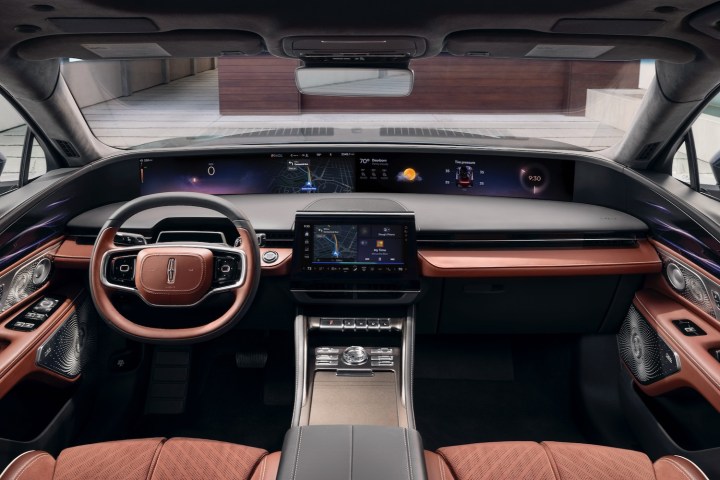
Ford had two examples of the Lincoln Nautilus on hand to show off the new infotainment system in its most elaborate form. The Nautilus has a dashboard-spanning 48-inch display screen with a smaller touchscreen as well. The big display screen is positioned far back, near the base of the windshield, which Ford says keeps everything closer to the driver’s line of sight. It’s also about where a head-up display would normally be located, which is why the Nautilus doesn’t have one.
What it does have is improved hardware and more flexible software. Ford claims up to five times faster main processing and 14 times faster graphics processing than its current Sync 4 system, with four times the memory, eight times the storage, and 5G connectivity. Screens will offer 4K resolution and dynamic dimming to keep sharp contrast under different lighting conditions. Ford has also brought more software development in-house, which the automaker claims will allow for quicker development of new features and over-the-air (OTA) updates.
The Lincoln display is truly impressive. Some automakers, like Mercedes-Benz, have spread three individual screens across the dashboard. The Lucid Gravity has a screen that stretches about halfway across the dash. But Lincoln now has a true door-to-door display. And while Ford vehicles will retain a more conventional layout, with a central touchscreen and digital instrument cluster, they’ll get the same hardware.
Google’s in the driver’s seat, but Apple and Amazon are still on board
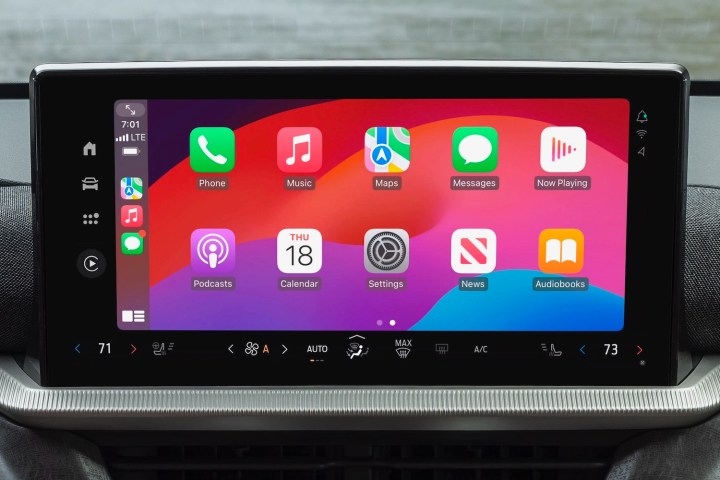
Ford is also the latest automaker to jump on the Google bandwagon, following Polestar, Volvo, General Motors, and Nissan in integrating the tech giant’s apps directly with its vehicles. Google Maps and Google Assistant will serve as the defaults for navigation and voice control, respectively, while Google Play Store integration will allow owners to download apps like Spotify directly to their vehicles.
Like the other automakers leaning on Google for in-car tech, part of Ford’s pitch here is personalization. Previous searches and preferences can be imported from other devices directly to the vehicle and added to a user profile that includes things like seat and mirror settings. Once everything is set up, drivers can simply ask Google to, for example, navigate “home” without having to put in their home address.
Unlike archrival General Motors, though, Ford isn’t going all-in on Google. It’s keeping both Android Auto and Apple CarPlay smartphone connectivity — something GM has said it will begin phasing out soon — noting that more than 50% of customers currently use them. Amazon Alexa connectivity is also supported so drivers can use Alexa for voice control instead of Google Assistant. That agnostic approach goes both ways. While Apple is rolling out a more expansive version of CarPlay that effectively takes over all dashboard screens, Ford isn’t committing to that just yet.
More apps, more content
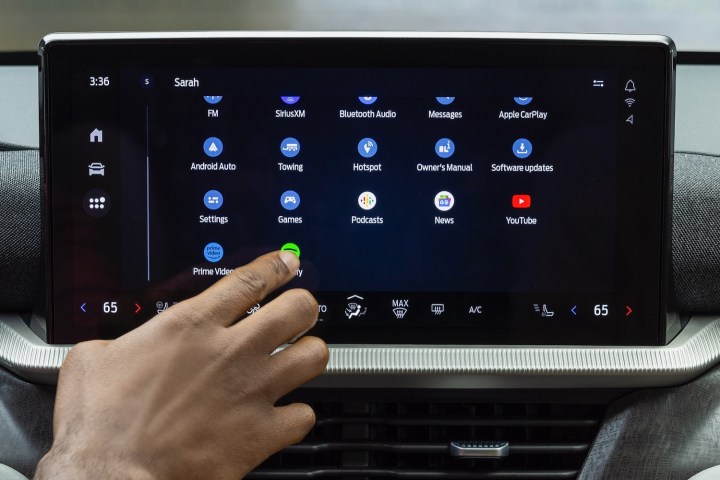
Much of the value Ford sees in its Google partnership is the Play Store and its ability to add new apps directly to cars, improving performance over the smartphone-based Apple CarPlay and Android Auto, which rely on the phone’s connection to a cellular network or Wi-Fi to get apps onto dashboard screens.
While Ford does expect to offer driving-related apps for things like parking or EV charging, most of what the automaker had to show was related to entertainment. The new system allows for embedded apps like Amazon Music, Spotify, and Audible while driving, as well as video streaming via YouTube and Prime Video while parked — similar to what’s already offered by Tesla. The Vivaldi web browser (also used by Polestar) will also be accessible while parked, with Google Chrome planned in future updates. In-car gaming is on the menu as well.
New features will help turn cars into yet another platform for digital content.
These features will help turn cars into yet another platform for digital content alongside smartphones, computers, tablets, and televisions — which is exactly where Ford thinks the market is heading.
“That has just become expected as part of people’s digital lives,” Zafar Razzacki, Ford’s director of future product, EV digital experiences and services, told Digital Trends. “I think it’s a strategic decision based on what we know about our customers and what our partner Google can give to us through the Play Store.”
Decluttered display
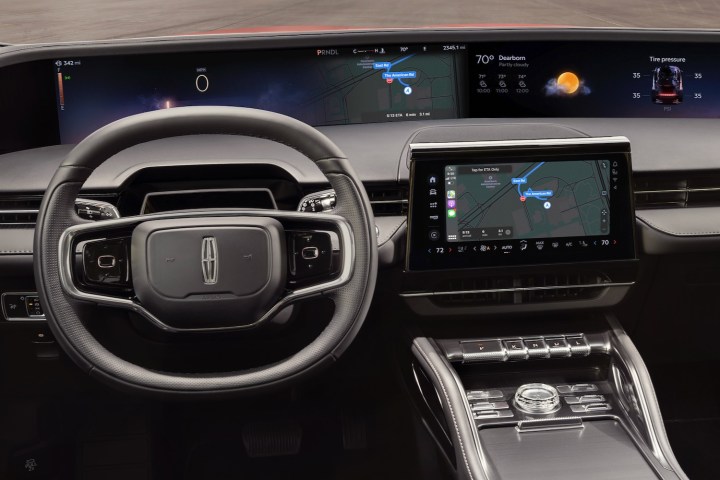
While we didn’t have time to watch an entire episode of Jack Ryan, we did get a quick overview of the system in a stationary Lincoln Nautilus and a mock-up of the version going into Ford-branded vehicles.
What stuck out about the big Lincoln display was how well it made use of the expansive panoramic format. Designers have spread out functions normally crammed into a touchscreen or instrument cluster across the dashboard. Maps can be shown on the main screen with an audio menu on the touchscreen below, giving each roughly the amount of real estate as some cars’ entire screens.
Functions normally crammed into a touchscreen are spread across the dashboard.
The Nautilus’ instrument cluster is also decluttered. It mainly shows speed and, if equipped, information for Ford’s BlueCruise driver-assist system. Secondary information like tire pressure readouts and the clock have been moved to widgets on the passenger’s side of the dashboard. According to Ford, these can be reconfigured to show different things and are designed to be “glanceable” to minimize distraction. Their look is based on smartphone push notifications, and engineers used eye-tracking tests to ensure they meet safety guidelines for driver attention.
A lot of this functionality appears tethered to the bigger display, which will be limited to Lincoln models. The Ford version will be simpler, featuring built-in Google apps and video streaming, but on a more conventional touchscreen layout. Ford is also adding the ability to show maps in the instrument cluster, but that’s been available from some other brands for a while now.
Question marks
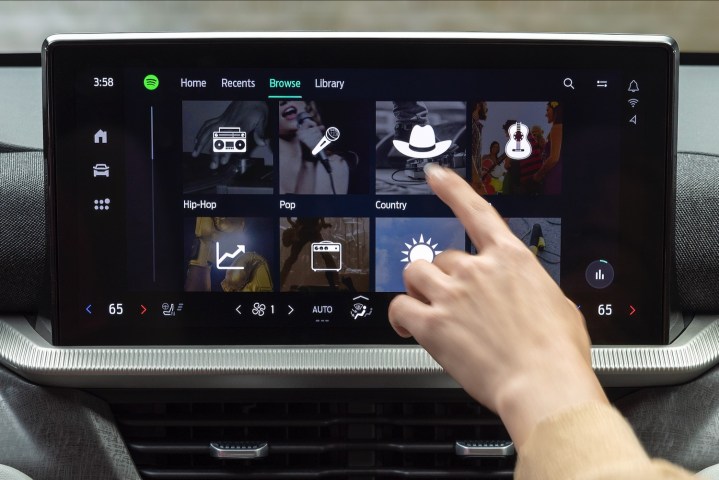
Ford’s next-generation infotainment tech shows that while automotive infotainment has reached a mature level of development, there are still some evolutionary leaps to be made. Like several of its fellow automakers, Ford is betting that customers will learn to download and use apps from an in-car version of the Google Play Store rather than just syncing their phones. And it believes there’s an appetite for in-car content streaming even while parked.
Ford claims to have market research to support these decisions, but it will still be interesting to see how customers react when these new features roll out. While a massive screen and clever interface will definitely help Lincoln compete against the likes of Audi, BMW, and Mercedes-Benz, the real test will be how Ford integrates this tech with the less-exclusive, mass-market vehicles of its own brand.
Most importantly, though, these new interfaces have to work well not just in a stationary vehicle or mockup but out in the real world. Ford may be adding more smartphone-like features, but cars are still for driving.
Editors’ Recommendations

